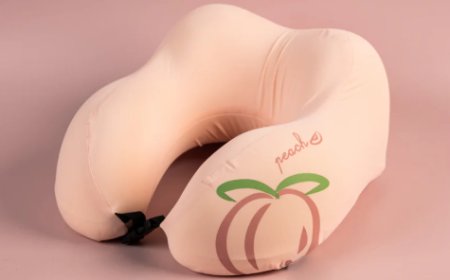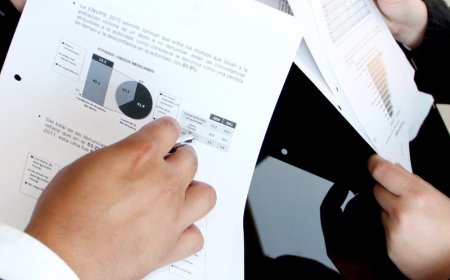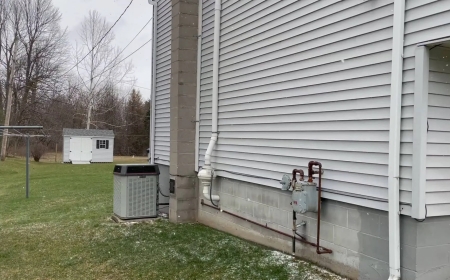How To Find Birria Jalisco Dallas
How to Find Birria Jalisco Dallas Birria Jalisco is more than just a dish—it’s a cultural experience rooted in the traditions of Jalisco, Mexico. Known for its rich, slow-cooked goat or beef stew, simmered in a complex blend of dried chilies, spices, and herbs, birria has surged in global popularity over the past few years. In Dallas, a city with a vibrant and growing Latin American community, fin
How to Find Birria Jalisco Dallas
Birria Jalisco is more than just a dish—it’s a cultural experience rooted in the traditions of Jalisco, Mexico. Known for its rich, slow-cooked goat or beef stew, simmered in a complex blend of dried chilies, spices, and herbs, birria has surged in global popularity over the past few years. In Dallas, a city with a vibrant and growing Latin American community, finding authentic Birria Jalisco isn’t just about satisfying hunger—it’s about connecting with heritage, craftsmanship, and flavor that has been passed down through generations.
For food enthusiasts, travelers, and locals alike, discovering the best Birria Jalisco in Dallas requires more than a quick Google search. It demands knowledge of neighborhood gems, understanding regional variations, recognizing quality indicators, and knowing where to look beyond the usual tourist traps. This guide is designed to be your comprehensive, step-by-step resource for locating and enjoying the most authentic Birria Jalisco in Dallas—whether you’re a first-time visitor or a longtime resident seeking to deepen your culinary exploration.
By the end of this guide, you’ll know exactly where to go, what to ask for, how to evaluate authenticity, and which tools and resources will help you uncover hidden culinary treasures. This isn’t just a list of restaurants—it’s a roadmap to experiencing Birria Jalisco the way it was meant to be enjoyed.
Step-by-Step Guide
Step 1: Understand What Makes Birria Jalisco Authentic
Before you begin your search, it’s essential to distinguish authentic Birria Jalisco from imitations. True Birria Jalisco originates from the state of Jalisco in western Mexico and is traditionally made with goat meat, though beef (especially chuck or shank) is now commonly used in the U.S. due to availability and cost.
Authentic Birria Jalisco is characterized by:
- Slow-cooked meat that falls apart effortlessly—cooked for 6 to 10 hours in a broth infused with dried chilies like guajillo, ancho, and pasilla.
- A deep, complex red sauce made from roasted chilies, garlic, cumin, oregano, cloves, and cinnamon—not just red food coloring or pre-made seasoning packets.
- Traditional serving style: served with consommé (the strained cooking broth) on the side, warm corn tortillas, chopped white onion, fresh cilantro, and lime wedges.
- Optional queso de Oaxaca melted into the tortilla before dipping, creating the popular “birria tacos” or “quesabirria.”
Be wary of places that serve birria with a thin, overly spicy, or artificially red broth. Authentic versions are deeply flavorful, slightly smoky, and balanced—not just hot. The consommé should be clear, aromatic, and rich enough to sip on its own.
Step 2: Identify Neighborhoods Known for Authentic Mexican Cuisine
Dallas is home to several neighborhoods with strong Mexican and Latin American communities where traditional food thrives. Focus your search in these areas:
- East Dallas (particularly near Swiss Avenue and Garland Road): A historic corridor with generations-old family-run taquerias and markets.
- South Dallas (near the intersection of Marsalis and Jefferson): Home to many immigrant-owned businesses offering regional specialties, including Birria Jalisco.
- Irving and Grand Prairie: These suburbs have seen explosive growth in Mexican culinary businesses, often run by families from Jalisco and surrounding states.
- North Dallas (Carrollton and Addison): While more commercialized, some of the most consistent quality birria can be found here due to high demand and competition.
Use Google Maps to search “Mexican restaurants near [neighborhood]” and sort by “Highest Rated.” Look for establishments that have been open for 5+ years and have photos of the actual food—not just stock images.
Step 3: Use Local Food Forums and Social Media
Online communities are invaluable for uncovering hidden gems. Join Facebook groups such as:
- Dallas Foodies
- Authentic Mexican Food in Texas
- Birria Lovers Dallas-Fort Worth
Search for posts with keywords like “best birria jalisco dallas 2024,” “real birria near me,” or “consommé birria.” Read the comments—locals often post detailed reviews, including photos of the broth, meat texture, and tortilla quality.
On Instagram, follow food influencers who specialize in Mexican cuisine. Search hashtags like
BirriaDallas, #BirriaJaliscoDallas, or #QuesabirriaDallas. Look for posts tagged with specific locations and check the business’s profile for consistency in posting. Authentic spots often update their menus, share behind-the-scenes cooking videos, and respond to customer comments with cultural context.
Step 4: Visit Local Mexican Markets and Butcher Shops
Many of the best Birria Jalisco vendors don’t operate from standalone restaurants. Instead, they’re found in Mexican grocery stores, butcher shops, or family kitchens operating out of commercial kitchens.
Visit markets like:
- El Super Market (multiple locations)
- La Michoacana Meat Market (South Dallas)
- Supermercado Gigante (Irving)
Ask the staff: “¿Dónde consiguen la mejor birria de Jalisco en la zona?” (Where do they get the best Birria from Jalisco in the area?) Often, the employees will point you to a small kitchen nearby, a family-run stall, or a weekend pop-up. Many of these vendors only serve birria on weekends or by pre-order.
Some shops sell frozen birria meat or consommé—buy a small portion, reheat it at home, and assess the flavor. If the broth tastes layered and not salty or chemical, it’s a strong indicator of quality.
Step 5: Look for Signs of Traditional Preparation
When visiting a restaurant or vendor, observe the following indicators of authenticity:
- Meat is cooked in large cauldrons over low heat, not in ovens or pressure cookers.
- The kitchen is visible and you can see the chilies being roasted or ground by hand.
- There’s no menu with “birria pizza” or “birria ramen”—authentic spots focus on regional dishes.
- Staff speak Spanish and can explain the cooking process or origin of the recipe.
- The broth is served separately in a small bowl or cup, not poured over the tacos.
Ask the server: “¿Es la receta original de Jalisco?” (Is this the original recipe from Jalisco?) A knowledgeable staff member will describe the chilies used, the cut of meat, and how long it’s cooked. If they say “it’s just spicy beef,” proceed with caution.
Step 6: Visit During Peak Hours and Ask for Recommendations
Authentic Birria Jalisco is often made in small batches and sells out quickly. Visit between 11 a.m. and 2 p.m. on weekends—the prime birria window. If the place is crowded with families and Spanish-speaking patrons, it’s a good sign.
Don’t be afraid to ask: “¿Cuál es su birria más tradicional?” (Which is your most traditional birria?) or “¿Cuánto tiempo se cocina la carne?” (How long is the meat cooked?)
Also, ask for recommendations: “¿Dónde más van ustedes a comer birria?” (Where else do you go to eat birria?) Locals often know the best-kept secrets.
Step 7: Try Quesabirria and Compare
Quesabirria—a fusion of birria and quesadilla—is now popular across Dallas. While not traditional in Jalisco, it’s a modern evolution that tests a vendor’s skill. A well-made quesabirria should:
- Have a crispy, golden tortilla from being dipped in consommé and grilled.
- Contain melted Oaxaca cheese and tender, flavorful meat—not dry or greasy.
- Be served with a side of consommé for dipping—never drowned in sauce.
Compare the texture and flavor across multiple vendors. The best versions have a deep umami richness, a hint of smokiness from the chilies, and a balanced acidity from lime. If the meat tastes bland or the cheese overpowers the broth, it’s likely mass-produced.
Step 8: Keep a Personal Birria Journal
Track your discoveries. Create a simple log with the following columns:
- Restaurant Name
- Location
- Meat Type (goat, beef, mix)
- Broth Flavor (rich, mild, smoky, salty)
- Meat Texture (fall-apart, chewy, dry)
- Consommé Quality (clear, aromatic, oily)
- Overall Experience (1–5 stars)
- Notes (e.g., “Made by family from Guadalajara,” “Only available Saturdays”)
Over time, patterns will emerge. You’ll notice which vendors consistently rank high, which neighborhoods yield the best results, and which ingredients matter most. This journal becomes your personal guide to Birria Jalisco mastery in Dallas.
Best Practices
Practice 1: Prioritize Longevity Over Virality
Just because a birria spot went viral on TikTok doesn’t mean it’s authentic. Many new businesses capitalize on trends with quick, low-quality versions. Look for places that have been operating for five years or more. Longevity signals consistency, community trust, and dedication to tradition.
Practice 2: Avoid Chains and Franchises
Chain restaurants like “Birria Tacos” or “Quesabirria Express” often standardize recipes for mass production. They may use pre-made seasoning, frozen meat, or synthetic broths. Authentic Birria Jalisco is handmade, batch-by-batch, and varies slightly each time—just like homemade mole or pozole.
Practice 3: Respect the Culture Behind the Food
Birria is more than a trend—it’s tied to family gatherings, Sunday rituals, and celebrations in Jalisco. When you order, acknowledge the culture. Learn to say “gracias” and “que rico está” (it’s delicious). Ask about the vendor’s background. Many owners are proud to share stories of how their abuela taught them to make it.
Practice 4: Go Beyond the Main Menu
Some of the best birria is never listed on the menu. Ask: “¿Tienen birria de hoy?” (Do you have birria today?) or “¿Hacen birria de cabra?” (Do you make goat birria?) Many vendors prepare goat birria only on weekends or by special request. Don’t assume it’s not available just because it’s not on the board.
Practice 5: Support Family-Owned Businesses
Family-run establishments are far more likely to preserve traditional recipes. Look for names like “Casa de la Birria,” “Tío Juan’s,” or “La Cocina de la Familia.” These spots often don’t have websites or social media—they rely on word of mouth. Ask neighbors, taxi drivers, or market vendors for recommendations.
Practice 6: Be Patient and Visit Multiple Times
Quality can vary by day, cook, or batch. A restaurant might serve perfect birria on Saturday but use leftover meat on Tuesday. Visit a top-rated spot at least three times before judging. Consistency is the hallmark of true craftsmanship.
Practice 7: Learn the Language of Birria
Understanding key terms helps you communicate better and identify authenticity:
- Consommé – The clear, flavorful broth served alongside.
- Guajillo – A mild, fruity dried chili essential to the sauce.
- Chile de árbol – A hotter chili sometimes added for spice.
- Carne de chivo – Goat meat, the traditional base.
- Tortillas de maíz – Corn tortillas, never flour.
Knowing these terms allows you to ask informed questions and recognize when a vendor is using proper terminology.
Practice 8: Don’t Judge by Price Alone
Authentic Birria Jalisco isn’t cheap. High-quality goat meat, hours of labor, and premium spices drive up the cost. A $12 plate of birria tacos with consommé is reasonable. If you see birria for $5, it’s likely made with low-grade meat or flavor enhancers. Paying more often means paying for authenticity.
Tools and Resources
Google Maps and Local Reviews
Use Google Maps to search “Birria Jalisco Dallas.” Filter results by:
- Rating (4.5 stars or higher)
- Number of reviews (50+ reviews indicates reliability)
- Photos (look for real customer photos, not professional stock images)
Read recent reviews (last 6 months) for up-to-date information. Look for comments like “broth was amazing,” “meat fell off the bone,” or “consommé tasted like my abuela’s.” Avoid places with generic reviews like “good food” or “fast service.”
Yelp and TripAdvisor
Yelp remains a powerful tool for discovering hidden gems. Use filters like “Open Now,” “Wheelchair Accessible,” and “Takeout Available.” Sort by “Most Recent” to see current experiences. TripAdvisor is useful for tourists but less reliable for hyperlocal recommendations.
Food Blogs and Podcasts
Follow Dallas-based food bloggers who focus on Mexican cuisine:
- The Dallas Food Chronicle – Regularly features deep dives on regional Mexican dishes.
- Latin Eats Dallas – Instagram and blog highlighting family-run kitchens.
- Taco Trail Podcast – Episodes dedicated to birria in North Texas.
These resources often interview owners, visit kitchens, and provide context you won’t find on review sites.
Local Food Tours
Consider booking a guided food tour focused on Mexican cuisine in Dallas. Companies like Taste of Dallas or South Dallas Food Walks offer curated experiences that include birria tastings, cultural history, and access to venues not open to the public.
WhatsApp and Telegram Groups
Many Mexican communities in Dallas use WhatsApp or Telegram for food alerts. Search for groups like “Birria Dallas Alerts” or “Jalisco Food Network.” Members post daily updates: “Birria de chivo hoy en la esquina de Marsalis y 18th. 11am–4pm. Only 20 portions.” These are goldmines for real-time, hyperlocal intel.
Online Marketplaces
Some authentic vendors sell frozen birria or consommé online via:
- Instagram DMs – Many small businesses accept orders via direct message.
- Facebook Marketplace – Search “birria jalisco dallas” under “Food & Drink.”
- Local co-ops – Some Mexican cultural centers offer weekend food sales.
Always ask for a photo of the product before purchasing and confirm storage and heating instructions.
Language and Cultural Resources
To deepen your understanding, explore:
- “The Art of Mexican Cooking” by Diana Kennedy – A definitive guide to regional Mexican dishes.
- YouTube channels like “Cocina con Lalo” or “La Cocina de Lalo” – Show authentic birria preparation.
- Documentaries like “Mexico: One Plate at a Time” – Features episodes on Jalisco cuisine.
Understanding the cultural roots enhances your appreciation and helps you recognize authenticity when you taste it.
Real Examples
Example 1: El Fogón de Jalisco – South Dallas
Located in a small storefront on Marsalis Avenue, El Fogón de Jalisco has been serving birria since 2017. Owned by a family from Guadalajara, the restaurant uses goat meat sourced from a local rancher. The broth is simmered for 8 hours with a blend of guajillo, ancho, and pasilla chilies roasted over an open flame. Their consommé is served in ceramic bowls with a sprinkle of fresh cilantro.
Customers consistently praise the “silky texture” of the meat and the “deep, earthy flavor” of the broth. They offer quesabirria on weekends, and the tortillas are handmade daily. The restaurant has no website—only a Facebook page with photos posted every Thursday.
Example 2: La Casa de la Birria – Irving
La Casa de la Birria is a family-run kitchen operating out of a commercial kitchen space. They specialize in beef birria and offer a “dry” version (no broth) and “wet” version (with consommé). Their secret? A 12-hour marinade with orange juice, vinegar, and a proprietary spice blend passed down from the owner’s grandmother.
They sell out every Saturday by noon. Customers line up as early as 7 a.m. The meat is so tender it’s served with a spoon. Their consommé is so rich, many patrons buy extra to freeze and use as a base for soups. They accept orders via WhatsApp only.
Example 3: Tío Juan’s Birria – East Dallas
Founded by Juan Morales, who moved from Jalisco in 1998, Tío Juan’s is a weekend-only pop-up at a local mercado. He uses only goat meat and cooks in a traditional clay pot. His birria is served with house-made tortillas from nixtamalized corn, and he grinds the chilies himself using a metate (stone grinder).
He doesn’t take reservations. Arrive by 10 a.m. on Saturday. The line moves fast, but the wait is worth it. Locals call it “the closest thing to home.”
Example 4: Quesabirria Co. – North Dallas
While this spot has expanded into a small chain, it remains one of the most consistent in the metroplex. They use a blend of beef and goat, slow-cooked with smoked chilies. Their consommé is reduced to a gelatinous richness, and they serve it in small mugs with a cinnamon stick for stirring.
They’ve gained popularity for their “birria ramen” and “birria burrito,” but their original quesabirria remains the star. The tortillas are dipped twice in consommé for maximum crispness. A favorite among food critics and locals alike.
Example 5: La Cocina de la Abuela – Grand Prairie
Translated as “Grandma’s Kitchen,” this unassuming spot is run by an elderly woman who learned to make birria from her mother in the 1950s. She prepares only 15 portions per day. The meat is so tender it doesn’t need a knife. Her broth includes a single bay leaf and a hint of clove—ingredients rarely used by modern vendors.
She doesn’t have a sign. The only way to find her is through word of mouth. Ask at any Mexican grocery in Grand Prairie, and someone will point you to the back alley where her van parks on Sundays.
FAQs
Is birria always made with goat meat?
No. While traditional Birria Jalisco uses goat (chivo), beef is now widely used in the U.S. due to availability. Many authentic vendors offer both. Goat birria has a deeper, gamier flavor; beef is richer and milder. Both can be authentic if prepared traditionally.
What’s the difference between birria and barbacoa?
Birria is a stew made with chilies and spices, slow-cooked in a broth. Barbacoa is traditionally meat (often lamb or goat) steamed in maguey leaves underground. While both are slow-cooked, birria has a distinct red sauce and is served with consommé. Barbacoa is typically served dry with onions and cilantro.
Can I find vegetarian birria in Dallas?
Some vendors now offer jackfruit or mushroom birria as a plant-based alternative. However, these are modern adaptations and not traditional. If you’re seeking authenticity, ask if the recipe follows the original method. Most traditional vendors do not offer vegetarian versions.
How long does birria last in the fridge?
Properly stored in an airtight container, birria meat and consommé can last up to 5 days in the refrigerator. The fat in the broth acts as a natural preservative. For longer storage, freeze it—it keeps well for up to 3 months.
Why is the consommé so important?
The consommé is the soul of the dish. It’s the liquid gold that captures the essence of the chilies, spices, and meat. Sipping it before or after eating the tacos enhances the flavor profile and completes the experience. Never skip it.
Should I eat birria with a fork or my hands?
Traditionally, birria is eaten with hands—using tortillas to scoop up the meat and dip into the consommé. But if you’re uncomfortable, a fork and spoon are perfectly acceptable. The goal is to enjoy the food, not follow rigid rules.
Is birria spicy?
It can be, but it’s not meant to be overwhelmingly hot. The heat comes from chilies like chile de árbol, but the primary flavor is rich, smoky, and savory. If it’s too spicy, ask for a milder version or add lime juice to balance it.
What should I order if it’s my first time?
Order the classic: birria tacos (2–3) with consommé on the side. Add a side of onions and cilantro. Try a bite of meat, dip the taco in the broth, and savor the layers. Then sip the consommé slowly. That’s the full experience.
Do any places in Dallas serve birria on weekdays?
Yes, but less commonly. Most authentic vendors prepare birria on weekends due to the labor-intensive process. Some restaurants, like Quesabirria Co. and El Fogón, serve it daily. Always call ahead or check social media for weekly updates.
How can I tell if the birria is homemade or pre-made?
Homemade birria has uneven meat texture—some pieces are tender, others slightly firmer. The broth has natural sediment and a complex aroma. Pre-made versions often have uniform meat, overly clear broth, and a one-dimensional flavor. If everything looks too perfect, it’s likely mass-produced.
Conclusion
Finding authentic Birria Jalisco in Dallas is not just a culinary quest—it’s a journey into culture, history, and community. The dish carries the stories of families who crossed borders to preserve their traditions, of mothers who cooked for generations, and of chefs who refuse to compromise flavor for convenience.
This guide has equipped you with the tools, knowledge, and mindset to navigate Dallas’s vibrant food landscape and uncover the true essence of Birria Jalisco. From understanding the ingredients to knowing where to look beyond the algorithm, you now hold the keys to an experience far deeper than a meal.
Remember: the best birria isn’t always the most popular. It’s the one made with patience, passed down through bloodlines, and served with pride. Visit with curiosity. Ask questions. Listen to stories. Taste slowly.
And when you find it—the perfect plate of birria, with its rich consommé, tender meat, and warm tortillas—you’ll understand why this dish has captured hearts from Jalisco to Dallas.
Now go find your next bowl.




































